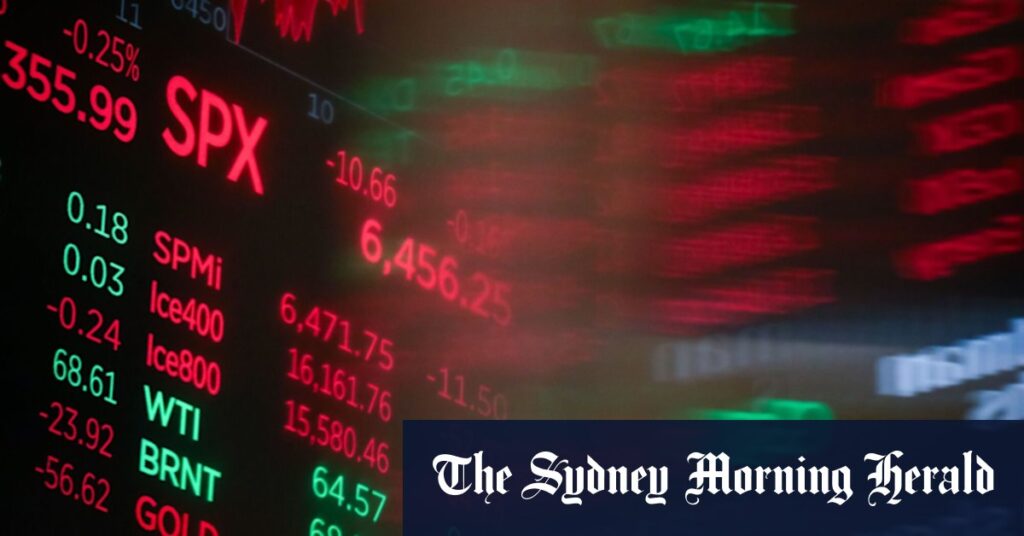
Investors on the Australian sharemarket are preparing for potential losses on Monday morning as renewed trade tensions between the United States and China ripple through global markets. The turmoil was sparked by Wall Street’s steepest selloff in six months, which unfolded as the week drew to a close.
ASX futures are indicating a drop of 84 points, or 0.9 percent, to 8896. This follows the S&P 500’s 2.7 percent plunge on Friday, marking its worst day since April, after former President Donald Trump suggested a “massive increase of tariffs” on Chinese imports. The Dow Jones Industrial Average fell 1.9 percent, while the Nasdaq composite tumbled 3.6 percent, reflecting broad market losses.
Impact on Australian Markets
The Australian dollar also felt the pressure, trading 0.8 percent lower at US65.05¢ as of 6.40am AEDT. The ASX concluded last week with losses, as investors hesitated over gold and iron ore miners, which lost momentum.
On Monday, rare earths miners such as Lynas and Iluka are expected to draw attention. Reports have emerged that the Albanese government is contemplating setting minimum prices for critical minerals and investing in new rare earth projects. This is part of a potential resources agreement with the US, which is reportedly looking to stockpile up to $US1 billion worth of critical minerals, according to the Financial Times.
Global Market Reactions
The latest US-China tensions have led to widespread declines across Wall Street, with approximately six out of every seven stocks within the S&P 500 falling. The selloff affected a wide range of companies, from tech giants like Nvidia and Apple to smaller firms grappling with the uncertainty surrounding tariffs and trade.
“That was clearly not something traders wanted to hear. Things got ugly quickly,” said Steve Sosnick of Interactive Brokers in a note titled “Tariff Rug Pull.”
Wall Street’s chief fear gauge, the Cboe Volatility Index (VIX), surpassed 20 for the first time since April, indicating rising market stress.
Political Maneuvering and Economic Implications
US stocks had been on track for a modest gain on Friday until Trump’s tariff announcement. His dissatisfaction stems from China’s export restrictions on rare earths, which are crucial for manufacturing a wide array of products, from consumer electronics to jet engines.
Trump took to Truth Social to express his frustration, stating, “We have been contacted by other Countries who are extremely angry at this great Trade hostility, which came out of nowhere.” He also cast doubt on a planned meeting with China’s leader, Xi Jinping, during an upcoming trip to South Korea.
In an attempt to de-escalate tensions, Trump later claimed that Xi Jinping “had a bad moment” when announcing the new export controls. “Don’t worry about China, it will all be fine! Highly respected President Xi just had a bad moment,” he wrote, adding that the US aims to assist, not harm, China.
“With markets already ripe for a pullback, the latest trade threats to China from President Trump were the tipping point to a broad selloff in equities,” said Charlie Ripley at Allianz Investment Management.
Broader Economic Consequences
The market’s reaction underscores concerns that US stock prices may have climbed too high, particularly following the S&P 500’s nearly unbroken 35 percent ascent from a low in April. Critics argue that prices have surged much faster than corporate profits, drawing parallels to the 2000 dot-com bubble.
Meanwhile, the oil market saw significant activity, with US crude prices dropping 4.2 percent to $US58.90 per barrel, and Brent crude, the international benchmark, falling 3.8 percent to $US62.73 per barrel. These declines coincided with a ceasefire between Israel and Hamas in Gaza, which could alleviate concerns about potential disruptions to oil supplies.
As the situation unfolds, investors will be closely monitoring developments in US-China relations and their impact on global markets. The ASX’s performance on Monday will likely serve as an early indicator of how these tensions might influence the broader economic landscape in the coming weeks.





